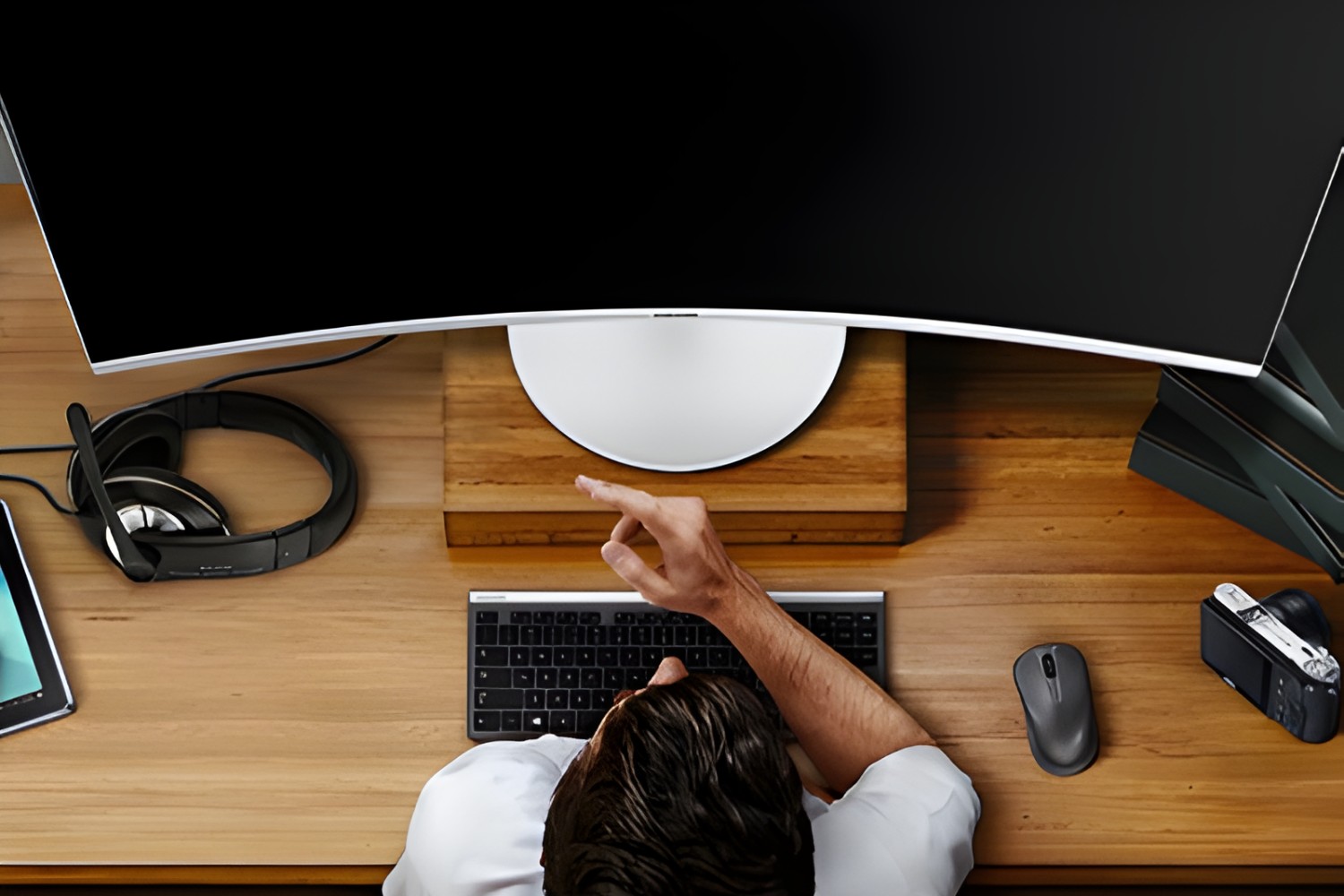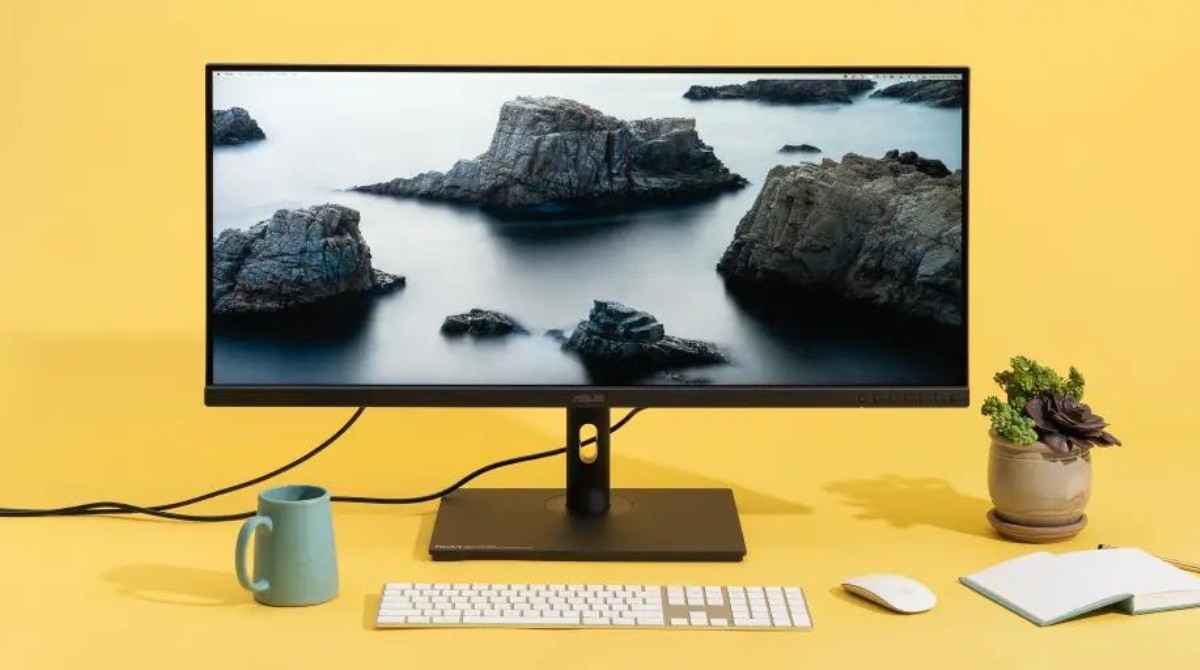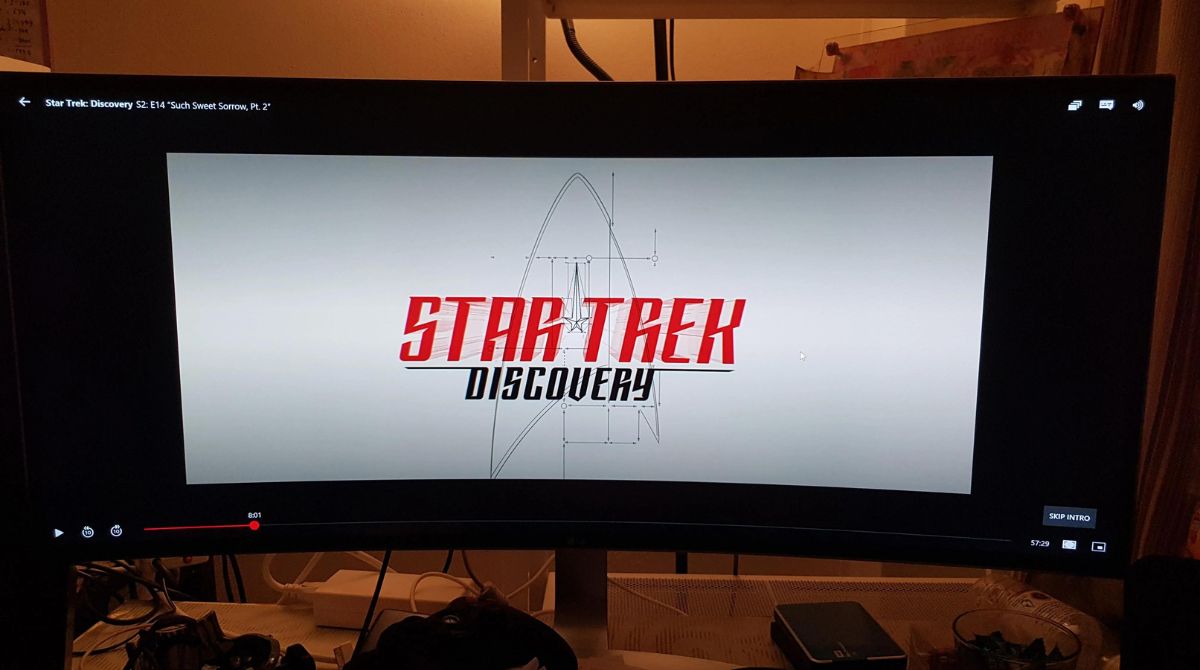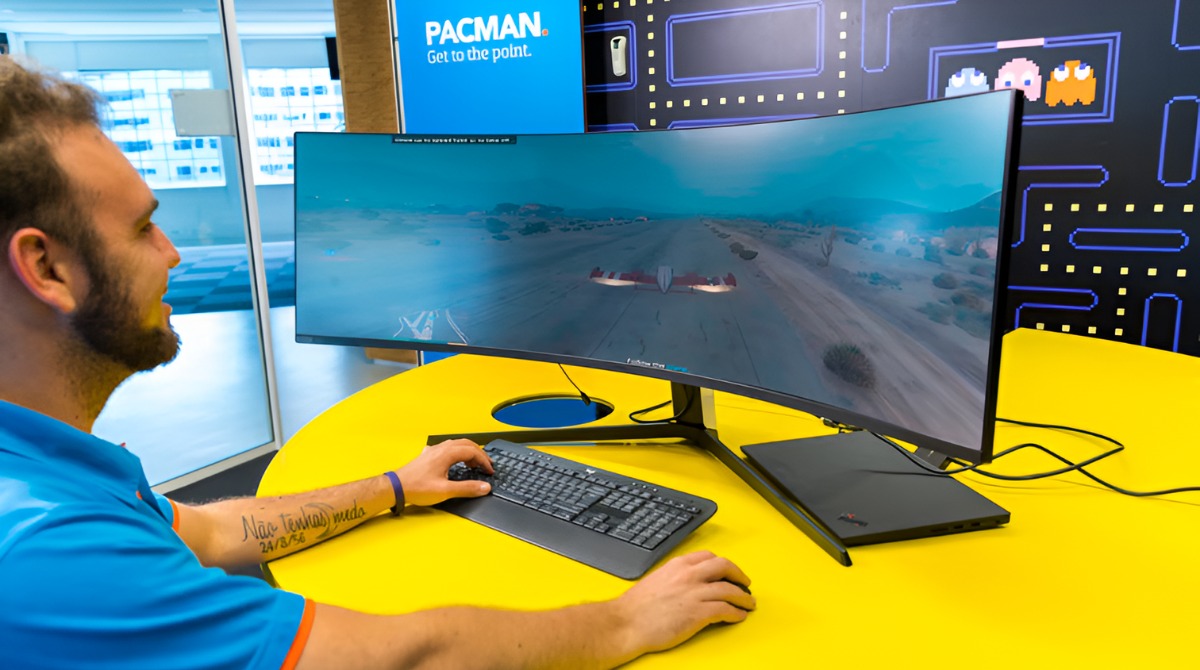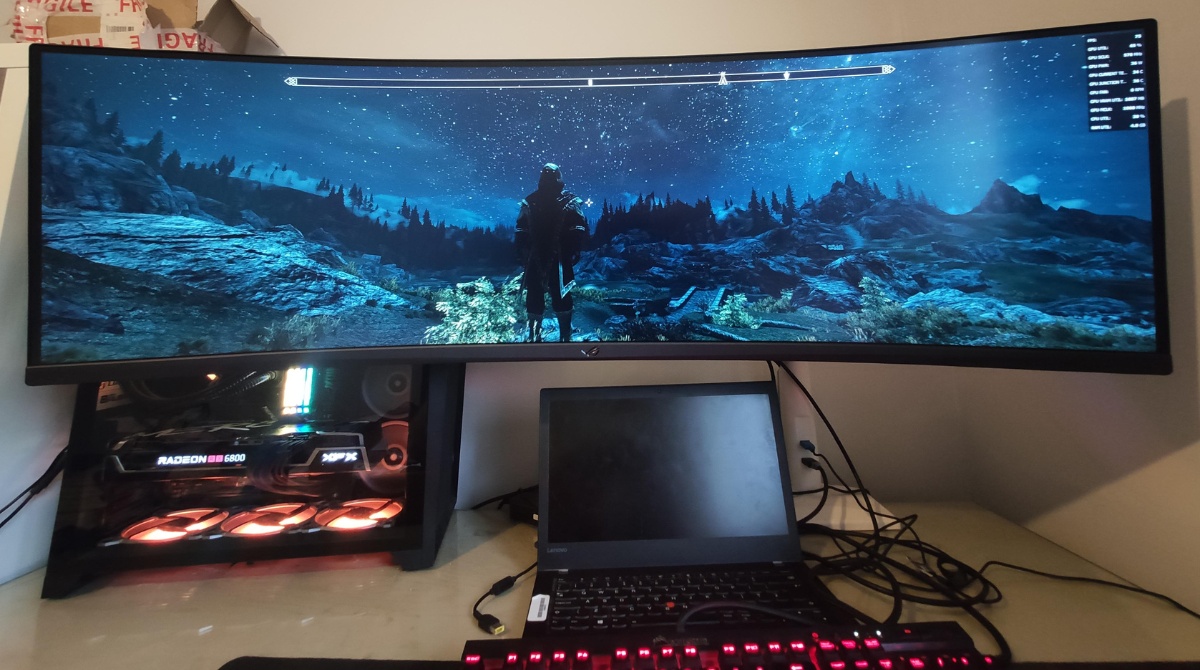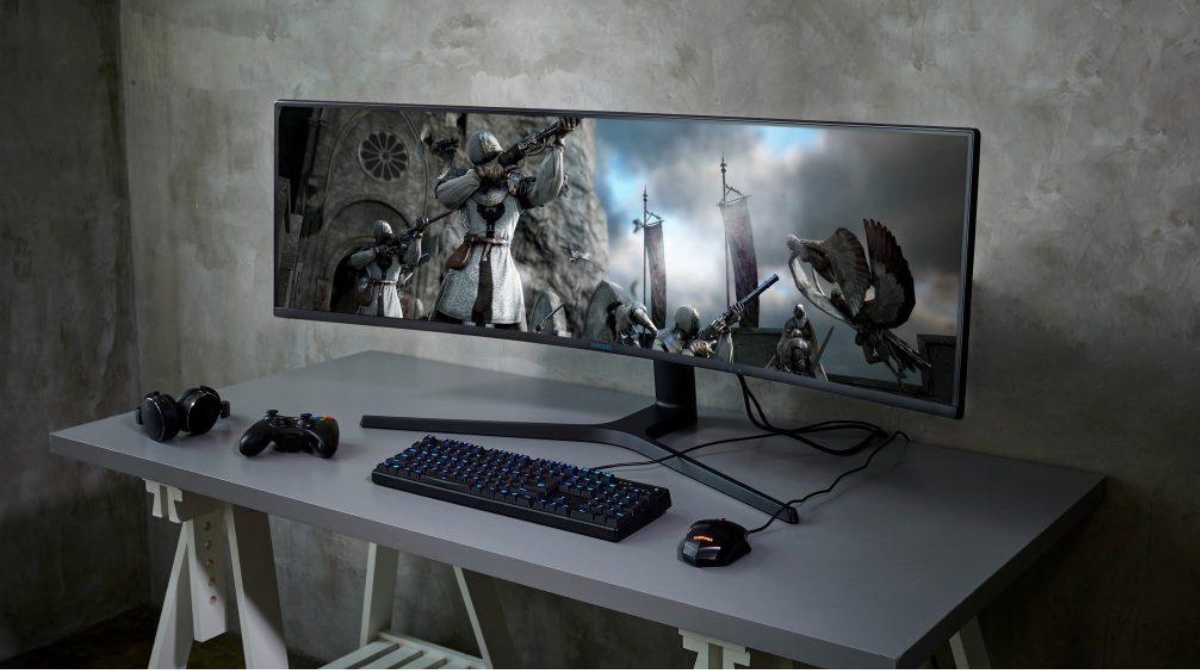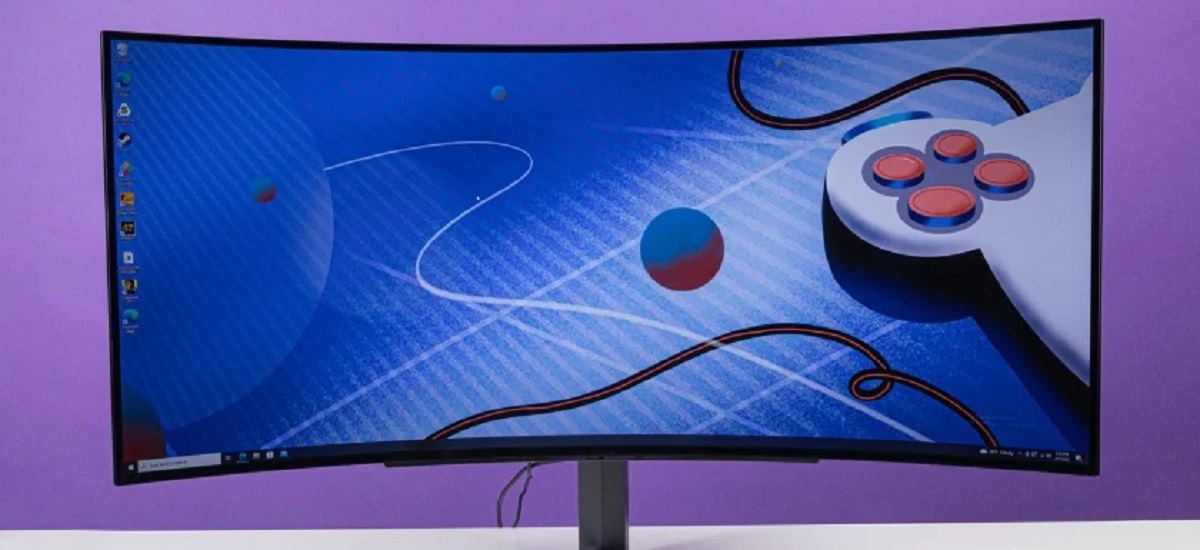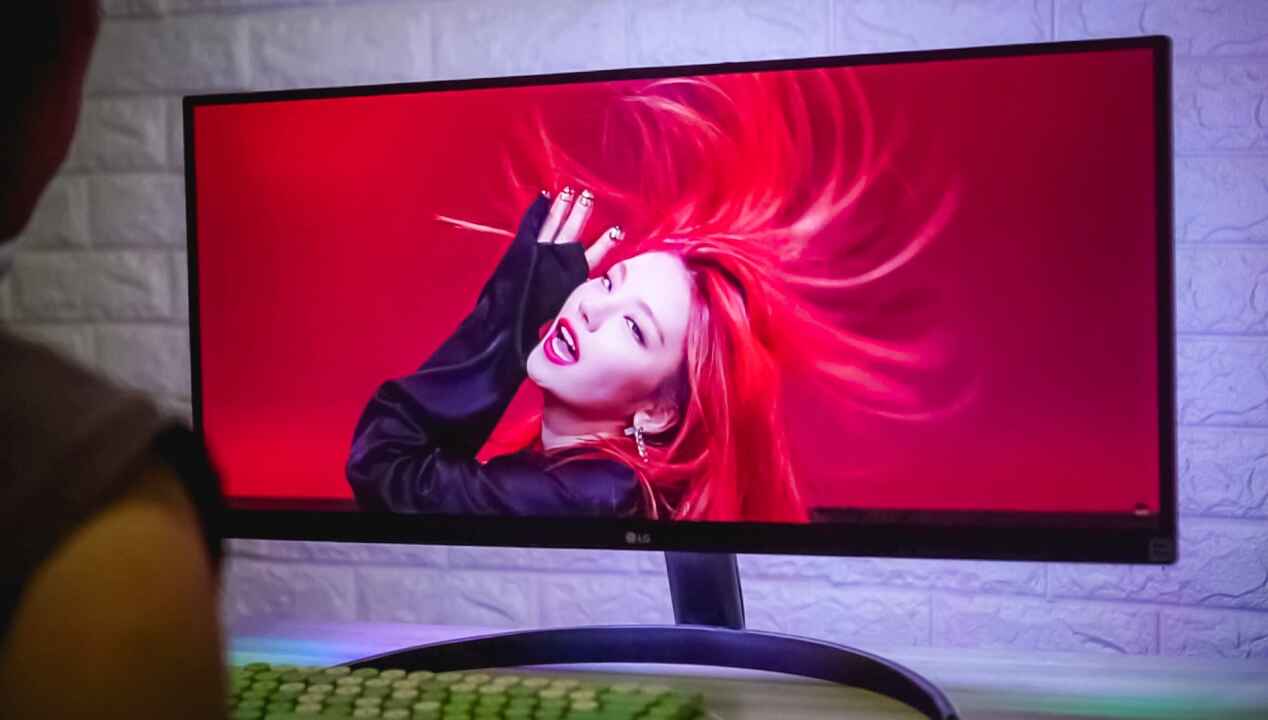Introduction
Having a wide and immersive display can greatly enhance your computing experience, which is why many users opt for ultrawide monitors. These monitors offer a wider aspect ratio, providing more screen real estate for multitasking, gaming, and enjoying multimedia content. However, if your PC fails to recognize an ultrawide monitor, it can be quite frustrating and hinder your productivity.
There can be several reasons why your PC is not recognizing the ultrawide monitor. It could be due to connection issues, outdated graphics drivers, incorrect display settings, compatibility problems, or even BIOS settings. Fortunately, there are several troubleshooting steps you can take to resolve this problem and get your ultrawide monitor working seamlessly with your PC.
In this article, we will explore various solutions to help you troubleshoot why your PC doesn’t recognize an ultrawide monitor. Whether you’re using a Windows PC or a Mac, these troubleshooting tips will guide you towards resolving the issue and enjoying the benefits of your ultrawide monitor to the fullest.
Before diving into the troubleshooting steps, it’s essential to ensure that you have properly connected your ultrawide monitor to your PC. Double-check the cable connections to make sure they are securely plugged into the monitor and your PC’s graphics card.
Now let’s move on to the next section and check the connection in more detail to resolve any connection-related issues.
Check the Connection
When your PC doesn’t recognize an ultrawide monitor, the first step is to check the connection between the monitor and your computer. A loose or faulty connection can prevent the monitor from being detected by your PC. Follow these steps to check the connection:
- Ensure that the cable connecting your ultrawide monitor to your PC is securely plugged in at both ends.
- If you are using an HDMI or DisplayPort cable, try using a different cable to rule out any cable-related issues.
- Inspect the ports on your PC and the monitor for any damage or debris that could hinder the connection. Clean the ports if necessary.
- If you are using an adapter or converter, make sure it is compatible with both your PC’s graphics card and the ultrawide monitor.
- Restart your PC and monitor. Sometimes, a simple restart can resolve connectivity issues.
After following these steps, check if your PC recognizes the ultrawide monitor. If the problem persists, proceed to the next troubleshooting step.
Before moving on, it’s worth noting that some ultrawide monitors might require specific connection types or adapters to be recognized by your PC. Refer to the monitor’s user manual or contact the manufacturer’s support for any specific connection requirements.
Now that we’ve checked the connection, let’s move on to the next section and explore how updating graphics drivers can help resolve the issue of your PC not recognizing the ultrawide monitor.
Update Graphics Drivers
Outdated or incompatible graphics drivers can often be the culprit behind your PC not recognizing an ultrawide monitor. Graphics drivers act as the communication bridge between your PC and the monitor, enabling them to work together seamlessly. If the drivers are outdated or incompatible, it can lead to compatibility issues and prevent your PC from detecting the ultrawide monitor. To update your graphics drivers, follow these steps:
- Identify the brand and model of your graphics card. You can usually find this information in the Device Manager or by checking the manufacturer’s documentation.
- Visit the website of the graphics card manufacturer (e.g., NVIDIA, AMD, Intel) and navigate to the support or drivers section.
- Enter the details of your graphics card model and operating system to find the latest drivers available.
- Download and install the updated graphics drivers following the manufacturer’s instructions.
- Restart your PC to ensure that the new drivers are properly installed.
After updating the graphics drivers, check if your PC now recognizes the ultrawide monitor. If the issue persists, proceed to the next troubleshooting step.
It’s worth noting that Windows 10 and macOS usually have built-in mechanisms to automatically update graphics drivers. However, sometimes these automatic updates may not include the latest drivers for your specific graphics card. Therefore, it’s always recommended to manually update the drivers from the manufacturer’s website to ensure compatibility and optimal performance.
Now that we’ve updated the graphics drivers, let’s move on to the next section and explore how adjusting the display settings can resolve the issue of your PC not recognizing the ultrawide monitor.
Adjust Display Settings
If your PC still doesn’t recognize the ultrawide monitor after checking the connection and updating the graphics drivers, it’s time to delve into the display settings. Incorrect display settings can prevent your PC from properly detecting and utilizing the ultrawide monitor. Follow these steps to adjust the display settings:
- Right-click on your desktop and select “Display settings” (Windows) or go to System Preferences > Displays (macOS).
- Ensure that the ultrawide monitor is detected under the “Display” settings. If it’s not listed or shown as unidentified, click on “Detect” (Windows) or “Gather Windows” (macOS) to force a re-identification.
- Verify that the resolution settings for the ultrawide monitor are correct. Ultrawide monitors typically have higher resolution options than standard monitors, so make sure to select the appropriate resolution for your monitor.
- Check if the refresh rate is set correctly. Most ultrawide monitors support a 60Hz refresh rate, but some high-end models can go higher. Ensure that the refresh rate matches your monitor’s specifications.
- Adjust the orientation of the monitor if needed. Ultrawide monitors commonly have a horizontal orientation, but some can be rotated vertically. Double-check that the orientation matches the physical position of your monitor.
- Try extending your display across multiple monitors if you have other monitors connected. Sometimes, your PC may prioritize another monitor as the primary display and not recognize the ultrawide monitor as a separate display.
Once you have made the necessary adjustments, apply the changes and check if your PC now recognizes the ultrawide monitor. If the issue persists, proceed to the next troubleshooting step.
It’s worth noting that the exact steps and options may vary slightly depending on your operating system version. Refer to the respective documentation or search for specific instructions tailored to your OS version if needed.
Now that we’ve adjusted the display settings, let’s move on to the next section and explore compatibility issues as a potential cause of your PC not recognizing the ultrawide monitor.
Check for Compatibility Issues
Compatibility issues can arise if your PC’s hardware or operating system is not fully compatible with the ultrawide monitor. In some cases, specific graphics cards, drivers, or operating systems may have limitations when it comes to recognizing and supporting ultrawide displays. To check for compatibility issues, follow these steps:
- Check the specifications of your ultrawide monitor and compare them with your PC’s hardware requirements. Verify if your graphics card, ports, and system specifications meet the minimum requirements for the ultrawide monitor.
- Research compatibility notes or known issues related to your specific ultrawide monitor model and the operating system you are using. Sometimes, manufacturers provide specific instructions or driver updates to address compatibility issues.
- Visit the support forums or community boards of the monitor’s manufacturer or your PC’s manufacturer. Others may have encountered similar issues and found solutions or workarounds.
- Consider contacting the manufacturer’s support directly for assistance. They may be able to provide additional troubleshooting steps or suggest alternative solutions.
By checking for compatibility issues and ensuring that your hardware and software meet the necessary requirements, you can minimize any potential conflicts that may prevent your PC from recognizing the ultrawide monitor.
If compatibility issues are identified, you may need to consider upgrading certain components, such as the graphics card or operating system, to ensure full compatibility with the ultrawide monitor.
However, if there are no apparent compatibility issues, and your PC still fails to recognize the ultrawide monitor, proceed to the next troubleshooting step: checking the BIOS settings.
Check the BIOS Settings
The BIOS (Basic Input/Output System) settings of your PC can sometimes affect its ability to recognize and configure hardware, including ultrawide monitors. If your PC doesn’t recognize the ultrawide monitor, it’s advisable to check the BIOS settings. Here’s how:
- Restart your PC and access the BIOS settings by pressing the designated key during the boot process. The key to enter the BIOS can vary based on your PC’s manufacturer (e.g., F2, Del, Esc).
- Navigate through the BIOS menu using the arrow keys and look for options related to video, display, or graphics settings.
- Ensure that the video output settings are correctly configured to support your ultrawide monitor’s resolution and aspect ratio. Look for options such as “Primary Display,” “Initial Display Output,” or “Graphics Configuration.”
- If available, enable any options that relate to multiple displays or extended display modes.
- Save the changes made to the BIOS settings and exit. Your PC will restart.
Once your PC restarts, check if it now recognizes the ultrawide monitor. Sometimes, adjusting the BIOS settings can resolve compatibility issues and help your PC properly detect and utilize the ultrawide monitor.
It’s essential to exercise caution when modifying BIOS settings as any incorrect modifications can cause system instability. If you are unsure or uncomfortable making changes, it is recommended to consult the manufacturer’s documentation or seek professional assistance.
If checking the BIOS settings did not resolve the issue, continue to the next troubleshooting step: resetting the power management settings.
Reset Power Management Settings
Power management settings on your PC can impact the recognition of peripherals, such as an ultrawide monitor. Resetting these settings can help resolve any issues related to power management that may be preventing your PC from recognizing the monitor. Follow these steps to reset the power management settings:
- Open the Control Panel on your Windows PC or System Preferences on your Mac.
- Click on “Power Options” (Windows) or “Energy Saver” (Mac) to access the power management settings.
- On Windows, select the “High Performance” power plan to ensure maximum performance and avoid any restrictions that may interfere with the monitor recognition process.
- On Mac, adjust the power settings to prevent the computer from entering sleep mode or turning off the display too quickly.
- Save and apply the changes to the power management settings.
- Restart your PC to ensure that the changes take effect.
After resetting the power management settings, check if your PC now recognizes the ultrawide monitor. Sometimes, adjusting these settings can resolve any power-related conflicts and allow your PC to detect the monitor properly.
If your PC still doesn’t recognize the ultrawide monitor, proceed to the next troubleshooting step: disconnecting other monitors or devices.
It’s worth noting that power management settings may vary slightly based on your operating system version. Refer to the respective documentation or search for specific instructions tailored to your OS version if needed.
Disconnect Other Monitors or Devices
If your PC is not recognizing the ultrawide monitor, it’s possible that the presence of other monitors or devices is causing conflicts or confusion. To troubleshoot this issue, try disconnecting all other monitors or devices connected to your PC and leave only the ultrawide monitor plugged in. Follow these steps:
- Shut down your PC completely.
- Disconnect all other monitors and devices, such as secondary monitors, docking stations, or USB devices, from your PC.
- Ensure that the ultrawide monitor’s cable is securely plugged into both the monitor and your PC’s graphics card.
- Power on your PC and check if it recognizes the ultrawide monitor as the sole connected display.
If your PC successfully recognizes the ultrawide monitor without any other displays or devices connected, it indicates that there might have been conflicts or confusion caused by the presence of other peripherals. You can then reconnect the other monitors or devices one at a time, ensuring that each is properly recognized and configured before adding the next one.
By disconnecting other monitors or devices, you can eliminate any potential conflicts and focus on troubleshooting the issue specifically with the ultrawide monitor.
If disconnecting other monitors or devices did not resolve the issue, proceed to the next troubleshooting step: running the hardware troubleshooter.
Run Hardware Troubleshooter
If your PC is still failing to recognize the ultrawide monitor, running the hardware troubleshooter can help identify and resolve any underlying hardware-related issues. The hardware troubleshooter is a built-in tool in Windows that can automatically detect and fix common hardware problems. Follow these steps to run the hardware troubleshooter:
- Open the Control Panel on your Windows PC or search for “Troubleshoot” in the Windows search bar.
- Click on “Troubleshoot” to access the troubleshooting settings.
- Under the “Find and fix other problems” section, select the “Hardware and Devices” option.
- Click on “Run the troubleshooter” to start the diagnostic process.
- Follow the on-screen instructions provided by the troubleshooter. It will scan your system for hardware issues and attempt to fix any problems it finds.
After the hardware troubleshooter completes its scan, it will provide a report detailing any detected issues and the recommended solutions. Apply the suggested fixes and check if your PC now recognizes the ultrawide monitor.
If the troubleshooter successfully resolves any hardware-related issues, you should be able to use your ultrawide monitor without further problems. However, if the problem persists, it may be indicative of a more complex hardware or software issue that requires further investigation or professional assistance.
After running the hardware troubleshooter, you have exhausted various troubleshooting steps to resolve the issue of your PC not recognizing the ultrawide monitor. If the problem still persists, it is advised to consult with a technical expert or contact the support team of your PC manufacturer or the ultrawide monitor manufacturer for further assistance.
Conclusion
When your PC doesn’t recognize an ultrawide monitor, it can be frustrating and hinder your productivity. However, by following the troubleshooting steps outlined in this article, you can resolve the issue and enjoy the benefits of your ultrawide monitor.
We began by checking the connection between the monitor and your PC to ensure everything is securely plugged in. Then, we updated the graphics drivers to ensure compatibility and optimal performance. Adjusting the display settings and checking for compatibility issues were the subsequent steps, followed by examining the BIOS settings and resetting the power management settings. Disconnecting other monitors or devices helped eliminate potential conflicts, and running the hardware troubleshooter allowed for automatic detection and resolution of hardware-related issues.
If you have gone through all the troubleshooting steps and the problem still persists, it is advisable to consult with a technical expert or reach out to the support team of your PC manufacturer or the ultrawide monitor manufacturer for further assistance.
Remember, each PC configuration may have unique circumstances, so it’s essential to adapt these troubleshooting steps to your specific situation. Patience and persistence are key when troubleshooting complex issues like this, as it often requires a combination of different solutions to achieve the desired result.
We hope that this article has helped you in troubleshooting why your PC doesn’t recognize an ultrawide monitor. With the right steps and a little bit of patience, you can overcome this issue and fully enjoy the immersive experience of your ultrawide monitor.







